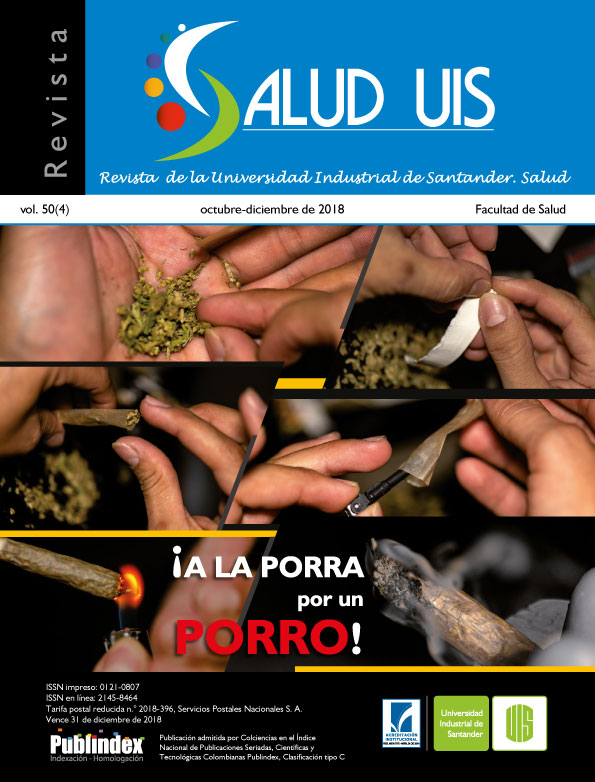Resumen
Introducción: La evaluación del ambiente educativo en medicina proporciona pautas para realizar cambios curriculares enfocados a lograr un mejor desempeño del estudiante y futuro profesional. En el presente estudio participaron de forma voluntaria 490 estudiantes de medicina de la Universidad Industrial de Santander. Objetivo: Medir el ambiente educativo, mediante el cuestionario DREEM (50 preguntas que evalúan cinco dimensiones: percepción del aprendizaje, percepción hacia los docentes, autopercepción académica, percepción del ambiente y autopercepción social), siendo el instrumento más utilizado para medir la calidad de la educación médica en el mundo. Resultados: El principal hallazgo encontrado fue la disminución drástica en la percepción positiva hacia los docentes a medida que se avanzó en la carrera, resaltando que al inicio los estudiantes prefieren no emitir juicios. Con respecto a las dimensiones de percepción de aprendizaje y autopercepción académica se encontraron los valores más bajos en tercer y sexto año de carrera. En cuanto a las actividades extracurriculares, el asistir a culto religioso y tocar un instrumento musical, fueron las que menos variación presentaron, comparando antes y después de ingresar a la escuela de Medicina de la Universidad Industrial de Santander. Conclusión: Este estudio pretende ser herramienta útil para replantear la estructura y detectar probables debilidades del programa de medicina de pregrado en la UIS, con el objetivo de generar recomendaciones a directivos, que permitan proyectar al estudiante de medicina como un ser integral y propender por el desarrollo armónico de sus dimensiones, en la que el aspecto académico sea considerado con igual importancia como el tiempo dedicado al descanso y a la practica de actividades extracurriculares, que le garanticen aprender sin afectar su calidad de vida.
Referencias
2. Prideaux D. The global-local tension in medical education: turning ‘think global, act local’ on its head? Med Educ. 2018 (in press). doi: 10.1111/medu.13630.
3. Quintero GA. Medical education and the healthcare system - why does the curriculum need to be reformed? BMC Medicine. 2014; 12: 213. doi: https://doi.org/10.1186/s12916-014-0213-3.
4. Comisión para la Transformación de la Educación Médica en Colombia. Documento de recomendaciones para la transformación de la educación médica en Colombia. Bogotá DC:
Ministerio de Salud y Protección Social / Ministerio de Educación; 2017.
5. Asociación Colombiana de Facultades de Medicina (Ascofame). Consenso de Montería.
6. Dent John-Harden Ronal. A Practical Guide for medical teachers. Fourth edition; 2013. Elsevier.
7. Aguilar-Barojas S, Jiménez-Sastré A, Castillo-Orueta ML. Validación de la traducción al idioma español del Dundee Ready Education Environment Measure. Invest Educ Med; 2017 (in press). doi: http://dx.doi.org/10.1016/j.riem.2017.03.001.
8. Riquelme A, Oporto M, Oporto J, Méndez JI, Viviani P, Salech F, et al. Measuring students´ perceptions of the educational climate of the new curriculum at the Pontificia Universidad Católica de Chile: Performance of the Spanish translation of the Dundee Ready Education Environment Measure (DREEM). Educ Health (Abingdon). 2009; 22(1): 112.
9. Thompson EC, Juan Z. Comparative cultural salience: measures using free-list data. Field Methods. 2006; 18: 398-412. doi: http://dx.doi.org/10.1177/1525822X0101300303.
10. Smith JJ. Using ANTHROPAC 3.5 and a spreadsheet to compute a free-list salience index. Field Methods. 1993; 5(3): 1-3. doi: https://doi.org/10.1177/1525822X9300500301.
11. Domínguez LC, Vega NV, Espitia EL, Sanabria ÁE, Corso C, Serna AM, et al. Impacto de la estrategia de aula invertida en el ambiente de aprendizaje en cirugía: una comparación con la clase magistral. Biomedica. 2015; 35(4): 513-521. doi: 10.7705/biomedica.v35i4.2640.
12. Shankar PR, Dubey AK, Balasubramanium R. Students´perception of the learning environment at Xavier University School of Medicine, Aruba. J Educ Eval Health Prof. 2013; 10(8): 1-5. doi: http://dx.doi.org/10.3352/jeehp.2013.10.8.
13. Hyunho K, Hanyoung J, Pyeongjin J, Seungju K, Young-Bae P, Yeonseok K. Perception study of traditional korean medical students on the medical education using the Dundee Ready Educational Environment Measure. Evidence-Based Complement Alternat Med. 2016; 6042967: 1-5. doi: http://dx.doi.org/10.1155/2016/6042967.
14. Morales Gómez A, Medina Figueroa AM. Percepción del alumno de pregrado de Medicina, acerca del ambiente educativo. Rev Med Inst Seguro Soc. 2007; 45(2): 123-131.
15. Ortega Javier, Pérez C, Ortiz L, Fasce E, McColl P, Torres G, et al. Estructura factorial de la escala DREEM en estudiantes de medicina Chilenos. Rev Med Chile. 2015; 143(5): 651-657. doi: http://dx.doi.org/10.4067/S0034-98872015000500013.
16. Ríos González CM. Percepción del ambiente educativo en estudiantes de Medicina de Latinoamérica, 2015. CIMEL. 2016; 21(2): 38-41.
Se autoriza la reproducción total o parcial de la obra para fines educativos, siempre y cuando se cite la fuente.
Esta obra está bajo una Licencia Creative Commons Atribución 4.0 Pública Internacional.
